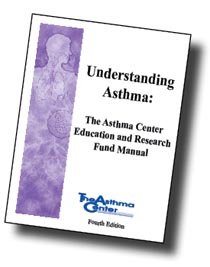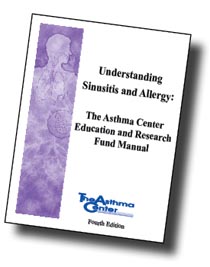Contact dermatitis
What is Allergic Contact Dermatitis?
Allergic contact dermatitis is an allergic reaction that occurs when an allergen comes in direct contact with skin. This reaction causes an inflammatory skin rash which often becomes red, raised and eventually can blister forming a type of eczema like rash. Common examples of allergic contact dermatitis are reactions to metals such as nickel found in jewelry or reactions to contact with poison ivy. The underlying cause of allergic contact dermatitis is that an individual becomes immunologically sensitive to the offending allergen. This is in contrast to another condition called irritant contact dermatitis. Irritant contact dermatitis causes a skin rash due to the irritating nature of a chemical that comes in direct contact with the skin, but the rash does not involve an immunological reaction. Allergic contact dermatitis often occurs in middle aged or elderly patients.
The rash of allergic contact dermatitis can be acute or chronic. A chronic rash will often lead to darkening of the affected skin particularly in darkly pigmented individuals. This allergic reaction is cause by a cellular or delayed type of hypersensitivity which is usually confined to the skin. The rash can begin 3 – 4 hours following contact with a sensitizing allergen, but more typically begins within 1 to 2 days of contact, thus the term” delayed hypersensitivity”. A similar rash can be also caused by irritants (irritant contact dermatitis) in which there is no immunologic reaction but is simply due to sensitive skin coming in contact with an irritating chemical exposure.
Symptoms and Triggers
Individuals with contact dermatitis may complain of itching, stinging or burning. Initially the skin is red and small blisters or elevations on the skin (papules) may form. These papules may be filled with fluid in severe cases as often occurs with severe poison ivy reactions. Eventually the rash resolves when the allergen is avoided and time passes. However chronic exposure can lead to a thickening of the affected skin (lichenification) and an increase in pigmentation from chronic rubbing.
Common allergens that cause allergic contact dermatitis are: poison ivy; poison oak, poison sumac, jewelry (nickel), topical antibiotics (neomycin), latex, hair dyes, preservatives (parabens), essential oils and adhesive tape.
Predisposing factors to contact dermatitis:
Susceptibility is thought to be a function of repeated exposures and decreased skin barrier as a result of exposure to solvents or frequent washing and thus removal of the normal protective skin barrier oils. Further repeated or frequent exposure at work to chemical and cleansing may be the reason for the great frequency of occupational allergic contact allergy.
Typical patterns of contact dermatitis:
• Eyelid involvement is unique because the eye lids are thin and easily absorb
allergens and irritants. Nail polish in contact with eye lids can cause contact
allergy. Swollen and inflamed eye lids are a major cosmetic problem that
requires thoughtful therapy and sensitivity due to the cosmetic issues. Many
individuals with eyelid involvement may also have elements of atopic
dermatitis and/or irritant dermatitis.
• Foot dermatitis: contact allergy to a dye, glue, or metal component of the shoe
• Hand, neck and ear lobe dermatitis: contact allergy to nickel in jewelry
• Face dermatitis: contact allergy to makeup, shampoo, hair dye
• Hand dermatitis: contact allergy to creams with preservatives, antibiotics, or
latex
• Mouth dermatitis: contact allergy to resin (epoxy from dental work)
Common allergens causing contact dermatitis:
• Fragrances
• Parabens (preservatives found in topical medications)
• Thimerosal (preservative found in cosmetics and topical medications including
eyedrops)
• Paraphenylenediamine (PPDA)(found in hair dyes, other dyes, inks)
• Lanolin (found in moisturizers)
• Toluene sulfonamide or formaldehyde resin (found in nail polish)
• Balsam of Peru
• Cobalt
• Cocamidopropyl betaine (sensitizer found in shampoos)
• Glyceryl thioglycolate (found in hair products)
• Sorbic Acid (sensitizer found in cosmetics)
• Kathon CG and Euxyl K 400
• Paraaminobenzoic acid (PABA) and derivatives (found in sunscreens)
• Colophony/Rosin (found in cosmetics adhesives, polish, glues, inks and wax)
• Medications topical corticosteroids, ethylenediamine, neomycin, bacitracin
• Topical anesthetics such as benzocaine
• Epoxy resins
• Formaldehyde (found in cosmetics and personal hygiene products)
• Mercurials such as merthiolate (thimerosal), mercurochrome
• Metals such as nickel found in jewelry, watch bands, bobby pins, safety pins,
eyeglass frames, zippers, snaps, scissors, shoelace eyelets and tattoos.
• Neomycin sulfate
• Chromium (found in chrome plated objects, leather preservatives, cement,
detergents)
• Rubber: tetramethylthiuram and disulfiram are rubber accelerators; thiurams
are used in pesticides and fungicides
• Compounds found in clothing such as azo dyes, anthraquinone dyes,
formaldehyde
• Plastics such as epoxies, formaldehyde resin and acrylated monomers (found
in denture repair, nail repair)
• Quaternium 15
• Potassium dichromate (found in chrome plating, tanned leathers, cement,
plaster, glues and paints)
• Textiles containing dyes and formaldehyde resins
Diagnosis
The diagnosis of allergic contact dermatitis is based on a patient’s history that links the allergen contact with the site of the rash and supported by objective positive patch testing to the suspected allergen.
The location of the rash may be helpful in pinpointing the diagnosis. For examples, a rash on the neck may be related to jewelry, eyelid contact dermatitis may be due to make-up or nail polish contact through rubbing, while a rash on the scalp may be due to hair dyes.
Patch testing is a diagnostic test in which the suspected allergen is placed on the back or arm and covered with a nonreactive adhesive which is then examined at 48 to 72 hours. Positive reactions that support the diagnosis of allergic contact dermatitis include a red, raised skin rash with or without vesicles (fluid filled small pockets) which are very itchy.
Treatment
Removal of the offending allergen is the first measure. For weeping lesions which are usually in an acute phase, application of compresses is best. Covering wet lesions with compresses of saline or Domeboro solution, changed frequently over the day, tends to dry lesions while removing skin debris that could lead to infection. Application of a topical corticosteroid between dressing changes begins to control the inflammation and hastens the resolutions of the reaction. In severe cases, such a generalized poison ivy, oral corticosteroids such as prednisone may be most effective. At times a weeping rash can develop a secondary infection which needs treatment with antibiotics.
How to determine if you have allergic contact dermatitis
Consult with an experienced allergist or dermatologist interested in allergic contact dermatitis and fully equipped with testing material for the following:
Shoe Contact Dermatitis Kit
Dental Screening Contact Dermatitis Kit
Cosmetic Contact Dermatitis Kit
North American Contact Dermatitis Panel
Epoxy Series Kit
Photoallergic Contact Dermatitis
Sunlight combined with certain chemicals produce a photosensitizer that can lead to an allergic reaction involving the skin. The reaction is based on the same mechanism seen in allergic contact dermatitis.
The following chemicals may produce a photoallergic contact dermatitis reaction:
• Halogenated salicylamides (uncommon in soaps in United States)
• Hexachlorophene in cleansers
• Sunscreens: PABA, benzophenones, cinnamates and avobenzone
• Fragrances
• Phenothiazines in insecticides when exposed topically
• Chlorpromazine taken orally
• Antibiotics taken such as oral sulfonamides, tetracyclines, fluoroquinolones,
hypoglycemics and thiazides.



